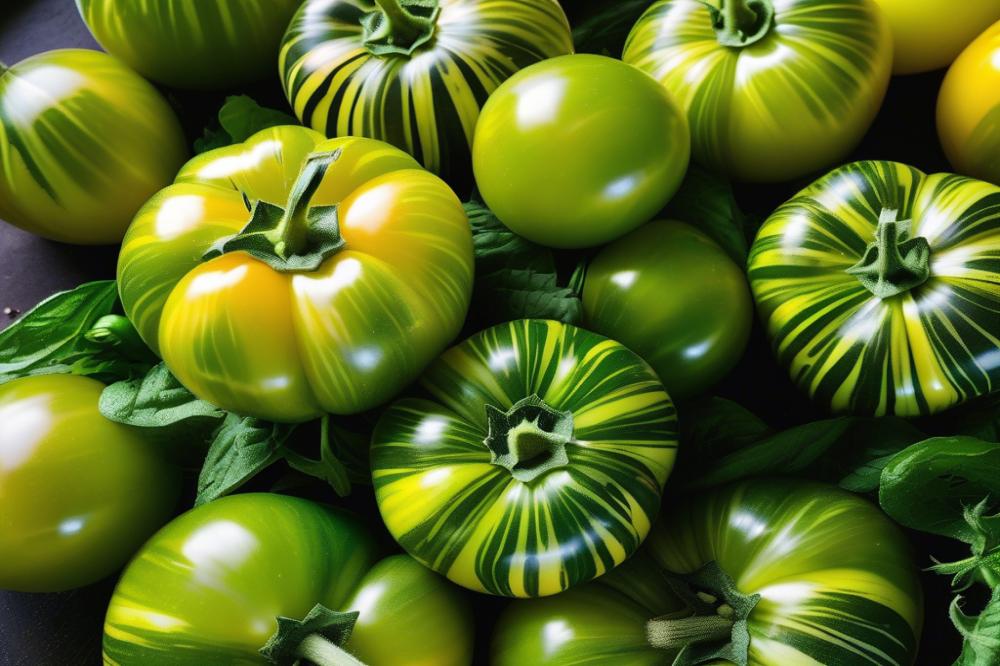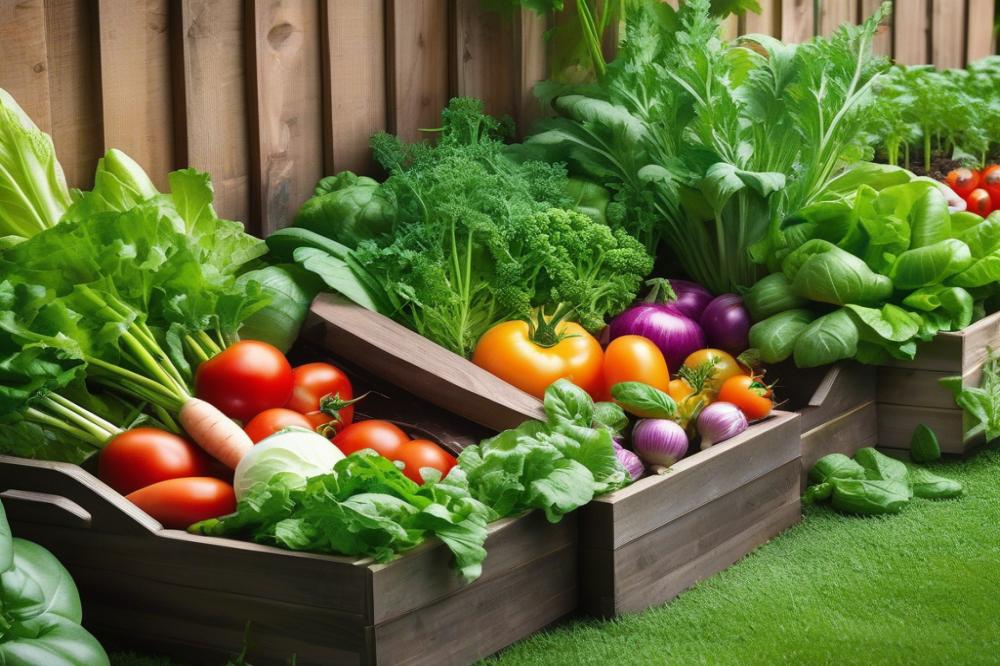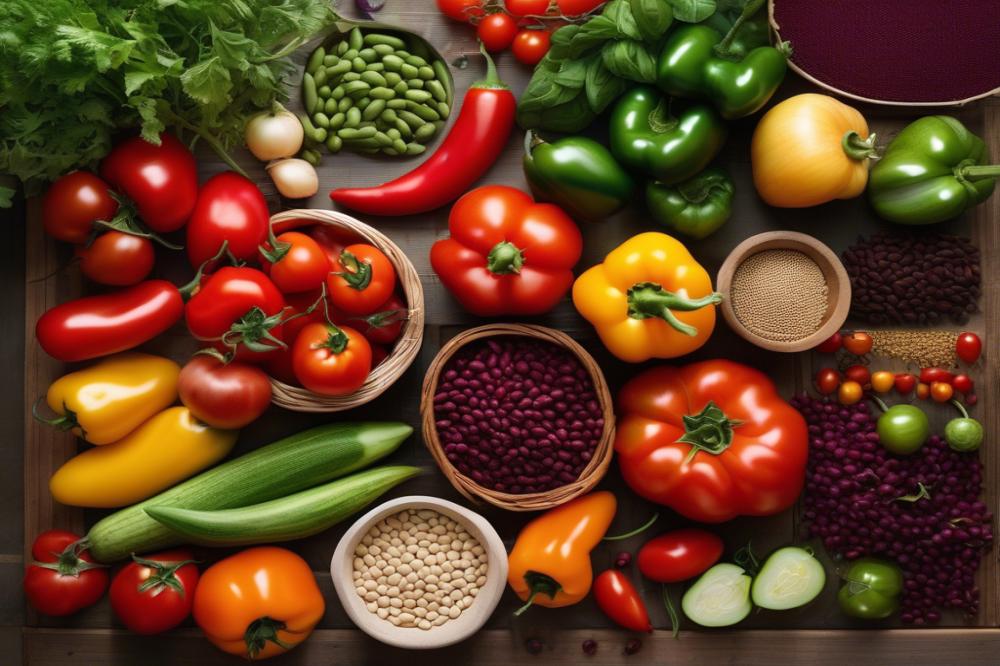Exploring heirloom tomatoes
heirloom tomatoes are special types of plants that have been passed down through generations. These varieties often come with rich flavors and vibrant colors. Many gardeners value them for their diversity and taste. Among these unique plants are striped tomatoes, which stand out in both looks and taste.
Introducing the Green Zebra Tomatoes


One member of the heirloom family is the Green Zebra Tomatoes. These tomatoes are known for their striking green skin adorned with dark green stripes. This distinctive appearance captures the interest of every gardener seeking to add something different to their vegetable garden. The flavor is a zesty blend of sweetness and tanginess, making them a delightful choice for salads and sandwiches.
The Value of Striped Tomato Varieties


Striped varieties bring a fun twist to gardening. They not only enrich the visual appeal of your harvest but also provide varying culinary experiences. Colorful fruits can inspire creativity in the kitchen, encouraging people to try new recipes. Striped tomatoes often attract attention at farmers’ markets and dinner tables alike.
Benefits of Growing Heirloom Tomatoes


There are many perks to including heirloom plants in your garden. These tomatoes typically carry more flavors compared to standard grocery store options. Additionally, growing tomatoes organically contributes to a sustainable lifestyle. Many gardeners enjoy the process of planting and nurturing heirloom varieties. Learning how to plant tomatoes and apply effective Tomato Care makes this gardening experience even more rewarding. With proper plant care, the anticipation of tomato harvesting becomes an exciting part of the gardening journey.
Understanding Green Zebra Tomatoes
Description of Green Zebra Tomatoes
Green Zebra Tomatoes are known for their bright green color and striking yellow stripes. They are medium-sized and have a somewhat oblate shape. The unique appearance makes them stand out in any vegetable garden. Their skin is smooth, and the flesh inside is equally appealing, ranging from pale green to yellow. This heirloom variety has a rich history, originating in the United States. Many gardeners appreciate their ornamental and culinary qualities.
Flavor Profile and Culinary Uses
When it comes to taste, these striped tomatoes offer a delightful blend of tanginess and sweetness. Their flavor profile is more complex than that of many typical tomatoes. This makes them perfect for fresh salads or as a vibrant addition to salsas. Chefs often highlight them in gourmet dishes due to their aesthetic and flavor. In organic gardening, they pair well with herbs like basil or oregano, enhancing various recipes. Some enjoy them roasted or grilled, which brings out their natural sugars and adds depth.
Comparison with Other Tomato Varieties
In comparison to standard varieties like beefsteak or Roma, this type has a distinctive taste that many find refreshing. Beefsteaks are meatier and great for sandwiches, while this heirloom variety offers a unique zing. Romeos are often preferred for sauces due to their thicker flesh. Each variety serves its purpose, but striped tomatoes hold a special place in diverse dishes. Knowing how to plant tomatoes involves considering each type’s qualities to maximize flavor.
Importance of heirloom plants in Biodiversity
Heirloom plants play a critical role in maintaining biodiversity within our gardens. They often possess traits that newer hybrids lack, making them essential in organic gardening. Varieties like the Green Zebra contribute genetic diversity that can help plants adapt to changing conditions. This richer gene pool can make a significant difference in resilience against pests and diseases. Gardeners who embrace heirloom varieties also help preserve history and cultural heritage through their seeds. growing tomatoes from heirloom lines fosters a connection to past gardening techniques and flavors.
How to Plant Green Zebra Tomatoes
Ideal Growing Conditions
Growing tomatoes requires specific conditions. They thrive in warm weather, needing full sunlight for at least six to eight hours each day. Well-drained soil enriched with organic matter is essential to promote healthy growth. These heirloom plants prefer slightly acidic soil, ideally with a pH between 6.0 and 6.8.
Selecting the Right Location
Finding the perfect spot in your garden is crucial. Look for a location that enjoys sunlight and is protected from strong winds. Raised beds or containers can work well too. Ensure there’s enough space for air circulation. This reduces the chances of disease among your plants.
Steps for Planting
Soil preparation is key to healthy plants. Start by turning over the soil and mixing in compost to improve fertility. When planting, space the seedlings about two feet apart. This allows each plant to grow without crowding. Dig a hole deep enough for the root ball, placing the plant in and covering the roots gently with soil. Avoid compacting the soil around the roots.
Timing for Planting
Timing plays a vital role in successful gardening. Plant your Green Zebra Tomatoes after the last frost of spring. In most regions, this is around mid to late May. Be mindful of your local climate, as temperatures can vary significantly. Warm soil encourages better germination and root development.
Tips for Growing in Different Regions
Consider your region when choosing tomato varieties. In cooler climates, seek out disease-resistant types. These will fare better with less sun. In warmer areas, ensure your plants have enough water. Dry spells can stunt growth. Adequate mulching retains moisture and protects roots from heat. Organic gardening practices promote healthier plants. Using organic fertilizers will help maintain soil quality. Tomato harvesting can begin when the fruits turn a vibrant green with those gorgeous stripes, indicating they’re ready to enjoy.
Caring for Your Green Zebra Tomato Plants
Watering Techniques and Frequency for Optimal Growth
Watering is crucial for growing tomatoes. Aim to provide one to two inches of water each week. Check soil moisture regularly. The top inch should feel dry, but the ground below must remain damp. Drip irrigation or soaker hoses work best, as they deliver moisture directly to the roots. Avoid overhead watering to prevent leaf diseases. Early morning is the best time to water to minimize evaporation.
Fertilizing Methods Suitable for Organic Gardening
Fertilizing helps your plants thrive. Use organic compost to enrich the soil. A balanced fertilizer with a ratio like 5-10-10 can also support growth during the early stages. Ensure you apply it before planting. Alternatively, you can feed your heirloom plants with fish emulsion or seaweed extract as they begin to set fruit. Apply these organic solutions every four to six weeks for healthy development.
Pest and Disease Management Specifically for Heirloom Varieties
Pests can be a real issue for tomato varieties. Regularly inspect plants for signs of trouble. Common pests include aphids and spider mites. Neem oil is an effective organic pest control option. To prevent disease, practice crop rotation in your vegetable garden. This technique minimizes the risk of soil-borne illnesses. If symptoms appear, remove affected leaves promptly to maintain plant health.
Supporting Your Plants: Stakes and Cages for Better Growth
Supporting your plants is essential for proper growth. Stakes can be used to help guide upright growth and prevent fruit from touching the soil. Wooden or metal stakes are great choices. Alternatively, cages offer a sturdy structure that supports the entire plant during its growth cycle. Choose cages that are tall and wide enough to allow for the expansion of your heirloom plants. A little support can make a big difference during tomato harvesting time.
Tomato Harvesting Techniques
Recognizing When Green Zebra Tomatoes are Ripe
Ripeness in tomatoes is essential for the best flavor. Look for a slight softness when you gently squeeze them. The color should be a vibrant green with yellow or light stripes visible. Noticing changes in color is crucial. If the fruit is still hard or predominantly green, it might need more time on the vine. A ripe tomato will also have a sweet, earthy smell. Take time to observe your heirloom plants daily.
Best Practices for Harvesting to Avoid Damage
Harvesting should be done carefully to maintain quality. Use scissors or garden shears to cut the stem just above the fruit. Tugging or pulling can cause bruising. Always be gentle; tomatoes are delicate. Collect them in a soft basket instead of a hard container to reduce the risk of squishing. It’s wise to pick them during cooler parts of the day, either early morning or late afternoon. This helps with flavor preservation.
Storage Tips for Preserving Freshness and Flavor
Proper storage ensures longevity for your harvest. Keep your tomatoes at room temperature, away from direct sunlight. Refrigeration is not ideal, as it can alter the flavor and texture. If you’re unable to use them right away, consider canning or making sauces. Storing them stem-side up can prevent bruising. Lining the storage container with a soft cloth may also help in safeguarding the tomatoes.
Ideas for Using Your Homegrown Tomatoes in Recipes
Homegrown striped tomatoes burst with flavor, perfect for various dishes. Slicing them fresh for salads creates a colorful and appetizing meal. Incorporating these unique tomatoes into sandwiches adds a burst of taste. You might also think about grilling them, which enhances their sweetness. Making salsa or pasta sauce offers another delicious option. Each recipe highlights the distinct essence of growing tomatoes in your garden.
Gardening Tips for Growing Striped Tomatoes
Companion Planting Ideas for Enhancing Growth
Companion planting can help your vegetable garden flourish. Pairing heirloom plants like basil with striped tomatoes encourages healthy growth. Basil repels harmful pests while enhancing flavor. Marigolds are another excellent choice. They deter aphids and nematodes, making them an ideal companion. Consider planting garlic nearby as well. It naturally fights diseases that affect tomato varieties. Aim for a diverse garden, creating a balanced ecosystem.
Common Mistakes to Avoid in Tomato Cultivation
Many beginners make critical errors in growing tomatoes. Overwatering is a common issue that leads to root rot. Water your plants deeply but less often. This allows roots to stretch and grow stronger. Failing to support plants can also hinder growth. Using cages or stakes is essential for healthy development. Keep an eye out for pests, too. Ignoring early signs of trouble can lead to infestations.
Seasonal Care Tips to Improve Yield and Quality
Change your care routine with the seasons. During spring, focus on soil preparation. Testing pH levels can guide your amendments. Consider adding compost, which improves soil structure and nutrients. As the plants grow, regular pruning helps manage their size. Remove lower leaves that touch the ground to prevent disease. In summer, adjust watering practices. Water early in the morning to prevent evaporation and fungal diseases. When it’s time for tomato harvesting, be gentle. Ripe fruits will easily detach from the vine with a slight twist.
Benefits of Crop Rotation and Soil Health for Long-Term Success
Crop rotation is crucial for maintaining soil health. Planting tomatoes in the same spot year after year can deplete nutrients. Moving them around each growing season helps replenish the soil. If you’re keeping a vegetable garden, consider rotating with peas or beans. They enrich the soil with nitrogen, benefiting subsequent crops. Always add organic matter like compost to keep the soil balanced. This practice promotes sustained growth and yields over time.
Final Thoughts on Growing Green Zebra Tomatoes
Growing Green Zebra Tomatoes brings countless rewards to your garden and your table. Their striking appearance and delightful taste can easily become the highlight of your summer harvest. Each slice reveals lovely green and yellow stripes, adding beauty to salads and dishes alike. Not only do they please the eye, but they also offer a tangy flavor that is refreshing and unique. Many gardeners find joy in cultivating heirloom plants because they often carry rich histories and stories. Their distinctiveness sets them apart from conventional varieties.
Trying heirloom tomato varieties can be an exciting venture for any gardener. With so many different shapes, sizes, and colors available, each type adds a new element to your gardening experience. You might discover new flavors that surprise you or develop a special connection to the plants you grow. Sharing your harvest with friends and family can create lasting memories. The seeds of heirloom varieties can be saved year after year, allowing you to enjoy the fruits of your labor in seasons to come.
Sustainable gardening practices also come with numerous advantages. By focusing on how you grow your food, you can reduce your carbon footprint and contribute positively to the environment. Techniques like composting, rotating crops, and using natural pest control help in maintaining a healthy garden ecosystem. You’ll not only provide fresh produce for your table but also foster a thriving habitat for beneficial insects and wildlife.
In conclusion, the experience of growing tomatoes, especially those with such vibrant attributes, can transform your gardening journey. Consider embracing heirloom varieties and sustainable methods for an enriching and fulfilling pastime. Your garden can be a source of beauty, joy, and nourishment for both you and the planet.



